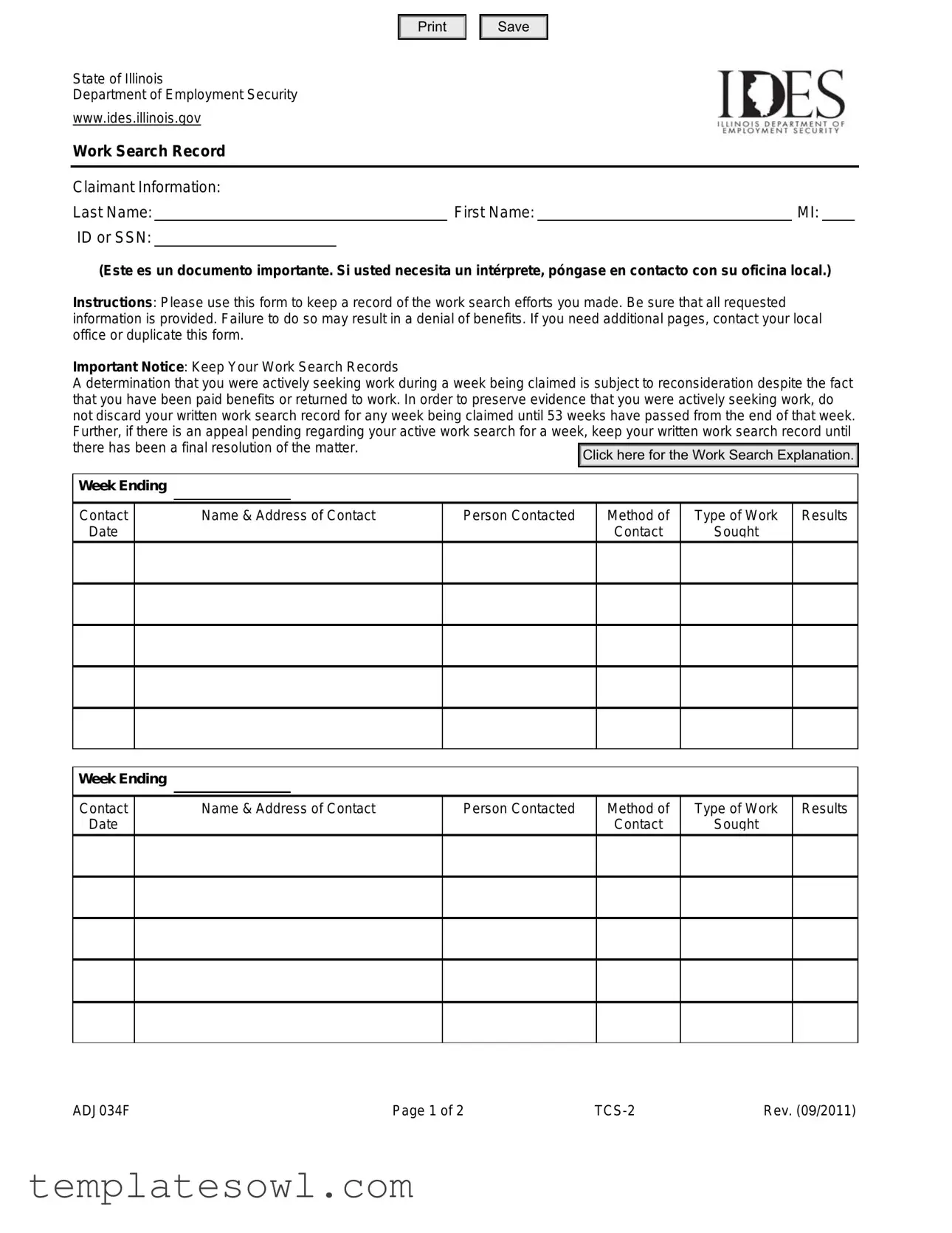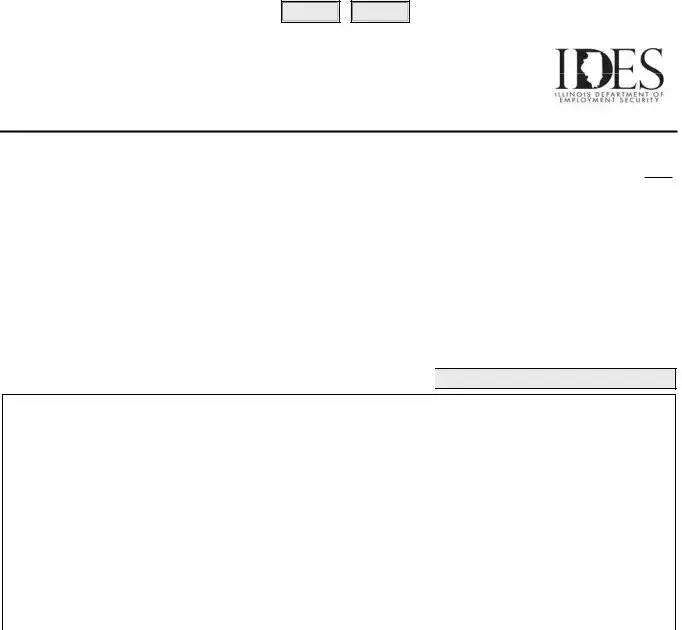What is the Work Search Record form used for?
The Work Search Record form is designed for individuals claiming unemployment benefits to document their job search activities. It serves as a detailed log of efforts taken to secure employment, including dates, the names and addresses of contacts, methods used to make contact, and the type of work sought. Completing this form accurately is crucial, as failure to provide sufficient information may lead to a denial of benefits.
Why is it important to keep the Work Search Record for 53 weeks?
Maintaining your Work Search Record for 53 weeks is essential because it acts as evidence of your active job search during the weeks you are claiming benefits. Even if you have received benefits or found employment, your work search efforts may be subject to review. Keeping these records for a year ensures that you have documentation available in case a determination regarding your job search status is questioned or appealed later.
What should I do if I need more pages for my Work Search Record?
If you require additional pages for your Work Search Record, you have a couple of options. You can contact your local unemployment office for assistance or simply duplicate the existing Work Search Record form to continue documenting your efforts. It's important to ensure that all required information is captured, regardless of the number of pages you need.
What happens if my Work Search Record is incomplete?
An incomplete Work Search Record can lead to complications with your unemployment benefits. The state may deny your claim, arguing that insufficient proof of your job search exists. To avoid this outcome, it is prudent to fill out the form in full detail and provide every requested piece of information accurately. This proactive approach can safeguard your eligibility for benefits.
What should I do if I have an appeal pending regarding my work search?
If there is an ongoing appeal concerning your work search record, it is crucial to retain that documentation until a final resolution is reached. Do not discard your Work Search Record during this time, as it may be necessary for your case. Keeping these records can provide important support for your argument and clarify your efforts to comply with job search requirements.



